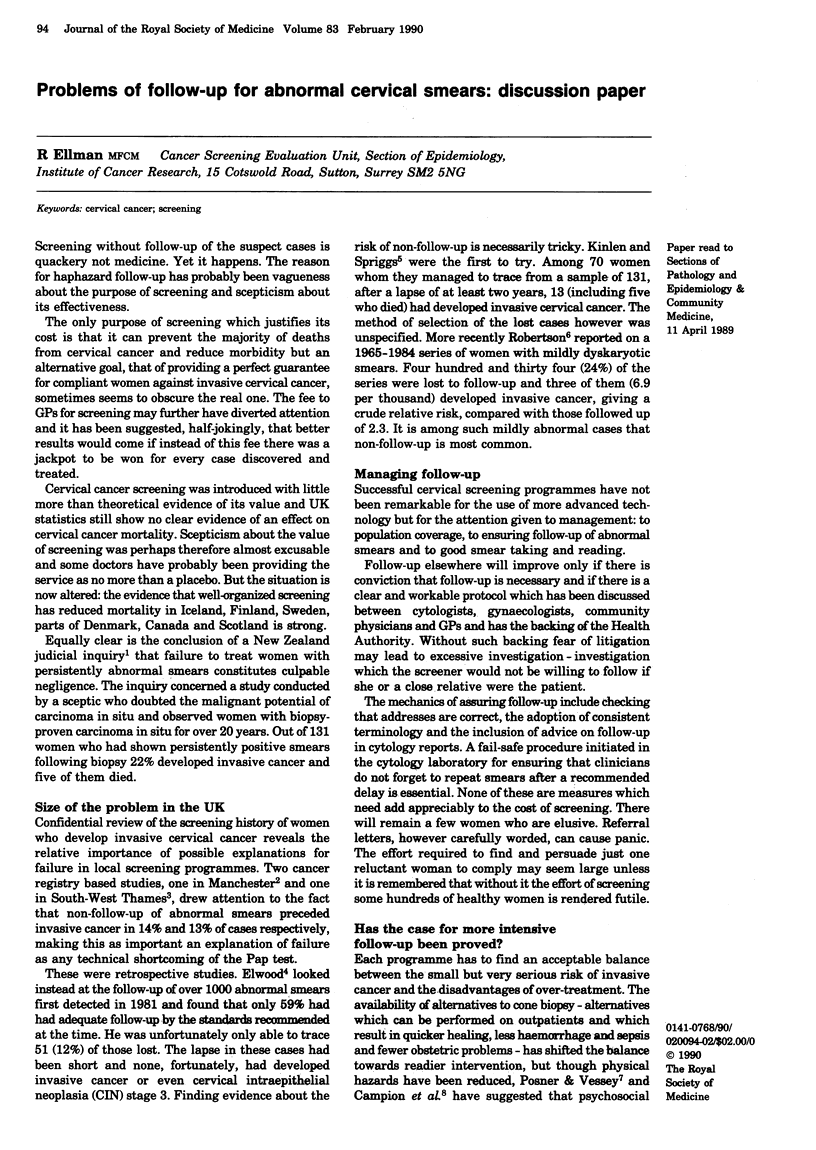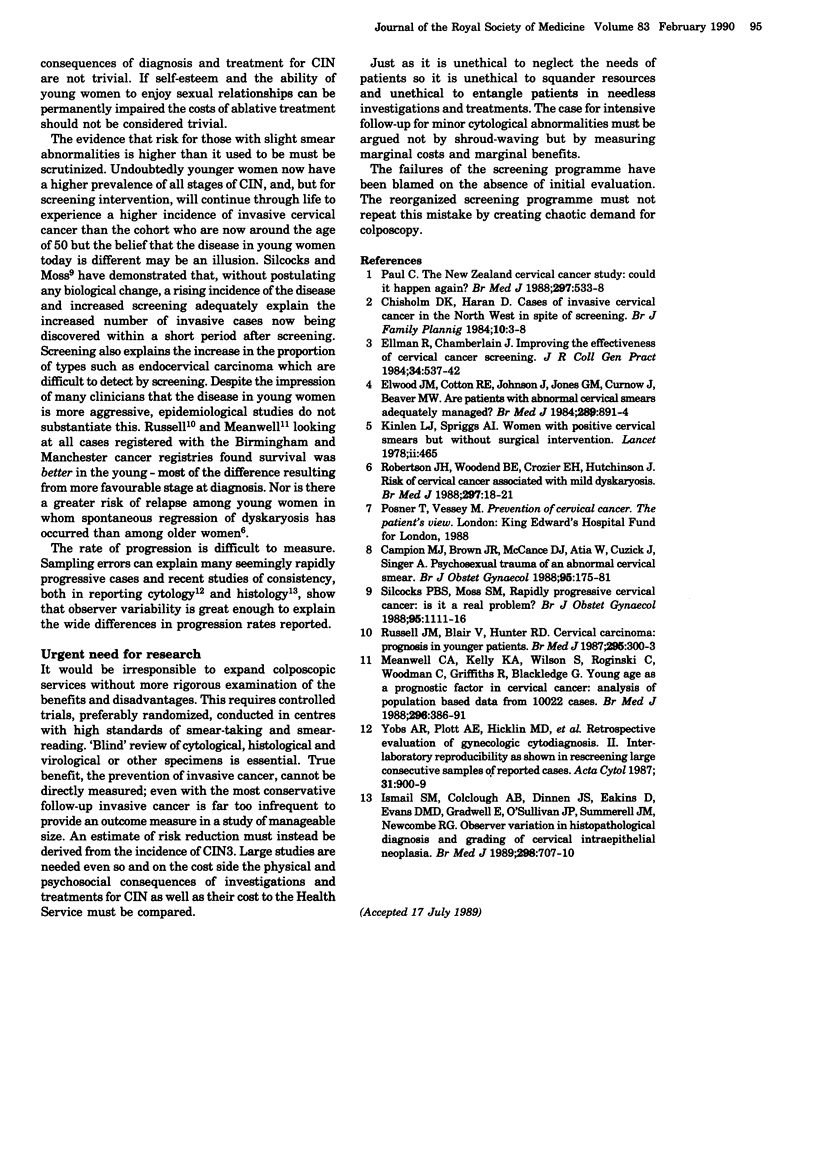Full text
PDF

Selected References
These references are in PubMed. This may not be the complete list of references from this article.
- Campion M. J., Brown J. R., McCance D. J., Atia W., Edwards R., Cuzick J., Singer A. Psychosexual trauma of an abnormal cervical smear. Br J Obstet Gynaecol. 1988 Feb;95(2):175–181. doi: 10.1111/j.1471-0528.1988.tb06848.x. [DOI] [PubMed] [Google Scholar]
- Ellman R., Chamberlain J. Improving the effectiveness of cervical cancer screening. J R Coll Gen Pract. 1984 Oct;34(267):537–542. [PMC free article] [PubMed] [Google Scholar]
- Elwood J. M., Cotton R. E., Johnson J., Jones G. M., Curnow J., Beaver M. W. Are patients with abnormal cervical smears adequately managed? Br Med J (Clin Res Ed) 1984 Oct 6;289(6449):891–894. doi: 10.1136/bmj.289.6449.891. [DOI] [PMC free article] [PubMed] [Google Scholar]
- Ismail S. M., Colclough A. B., Dinnen J. S., Eakins D., Evans D. M., Gradwell E., O'Sullivan J. P., Summerell J. M., Newcombe R. G. Observer variation in histopathological diagnosis and grading of cervical intraepithelial neoplasia. BMJ. 1989 Mar 18;298(6675):707–710. doi: 10.1136/bmj.298.6675.707. [DOI] [PMC free article] [PubMed] [Google Scholar]
- Kinlen L. J., Spriggs A. I. Women with positive cervical smears but without surgical intervention. A follow-up study. Lancet. 1978 Aug 26;2(8087):463–465. doi: 10.1016/s0140-6736(78)91457-5. [DOI] [PubMed] [Google Scholar]
- Meanwell C. A., Kelly K. A., Wilson S., Roginski C., Woodman C., Griffiths R., Blackledge G. Young age as a prognostic factor in cervical cancer: analysis of population based data from 10,022 cases. Br Med J (Clin Res Ed) 1988 Feb 6;296(6619):386–391. doi: 10.1136/bmj.296.6619.386. [DOI] [PMC free article] [PubMed] [Google Scholar]
- Paul C. The New Zealand cervical cancer study: could it happen again? BMJ. 1988 Aug 20;297(6647):533–539. doi: 10.1136/bmj.297.6647.533. [DOI] [PMC free article] [PubMed] [Google Scholar]
- Robertson J. H., Woodend B. E., Crozier E. H., Hutchinson J. Risk of cervical cancer associated with mild dyskaryosis. BMJ. 1988 Jul 2;297(6640):18–21. doi: 10.1136/bmj.297.6640.18. [DOI] [PMC free article] [PubMed] [Google Scholar]
- Russell J. M., Blair V., Hunter R. D. Cervical carcinoma: prognosis in younger patients. Br Med J (Clin Res Ed) 1987 Aug 1;295(6593):300–303. doi: 10.1136/bmj.295.6593.300. [DOI] [PMC free article] [PubMed] [Google Scholar]
- Silcocks P. B., Moss S. M. Rapidly progressive cervical cancer: is it a real problem? Br J Obstet Gynaecol. 1988 Nov;95(11):1111–1116. doi: 10.1111/j.1471-0528.1988.tb06787.x. [DOI] [PubMed] [Google Scholar]
- Yobs A. R., Plott A. E., Hicklin M. D., Coleman S. A., Johnston W. W., Ashton P. R., Rube I. F., Watts J. C., Naib Z. M., Wood R. J. Retrospective evaluation of gynecologic cytodiagnosis. II. Interlaboratory reproducibility as shown in rescreening large consecutive samples of reported cases. Acta Cytol. 1987 Nov-Dec;31(6):900–910. [PubMed] [Google Scholar]


